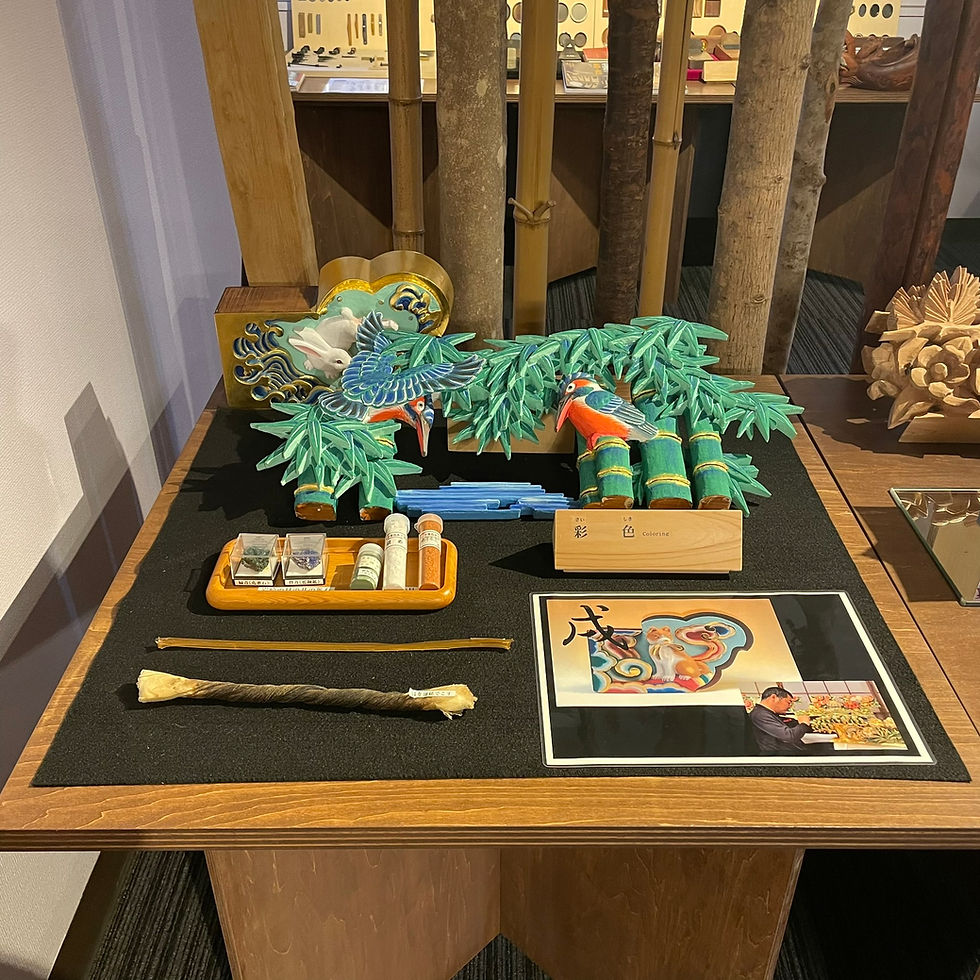Experiencing Traditional Japanese Architectural Techniques (4): "Saishiki"
- Shinya Yamada
- Apr 17, 2024
- 2 min read
Updated: Sep 24, 2024

Experience Key Traditional Japanese Architectural Techniques
At the Kigumi Museum, visitors can explore not only "Kigumi" but also other traditional Japanese architectural techniques. Most of these techniques are registered under the UNESCO Intangible Cultural Heritage category, "Traditional skills, techniques, and knowledge for the conservation and transmission of wooden architecture in Japan." Let's explore the traditional Japanese architectural techniques displayed at the Kigumi Museum.
What is Saishiki?
In traditional Japanese architecture, beauty is not only structural but also decorative, often enhanced through colors. One such decorative technique is known as "Saishiki." This blog will explain the history and techniques of Saishiki, as well as its importance in the modern era.

History of Saishiki
Saishiki, a method of decoration, was introduced to Japan from China along with the arrival of Buddhism. During the Heian period (794-1185 AD), it evolved into a uniquely Japanese technique and flourished mainly in temple and shrine architecture. Especially during the Muromachi (1336-1573 AD) and Momoyama (1573-1603 AD) periods, lavish decorations were applied using lacquer, enhancing their grandeur.

Techniques of Saishiki
Saishiki involves various techniques, typically including the following steps:
Base Preparation: Wood is thoroughly prepared to enhance durability.
Basic Painting: White or other colors are applied to create a smooth surface.
Drawing and Patterns: Fine brushes are used to paint motifs of myths and historical episodes.
Application of Gold Leaf: Gold leaf is added to especially significant areas to increase opulence.
Challenges in Modern Times
Since the modern era, the prevalence of oil-based and synthetic dyes has reduced the use of traditional natural pigments in Saishiki. Additionally, a decrease in skilled craftsmen has made it difficult to restore and preserve cultural properties.

Preservation and Restoration of Saishiki
Restoring Saishiki requires advanced skills. Techniques include stabilizing flaked-off old paint, retouching faded colors, and restoring original patterns. Through these methods, the historical value of buildings can be preserved and passed on to future generations.
Conclusion
Saishiki plays a vital role in traditional Japanese architecture. Understanding its techniques and history helps deepen appreciation for Japanese culture.









Comments